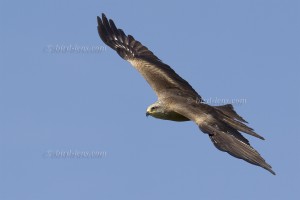 Frankfurt Airport (FRA) is the gateway to continental Europe. Many airlines use the Airport as a hub for connecting flights all over the world. If you have some more spare time but only 2 hours between two flights, you might be interested to know, where you can find good places to stretch your legs, enjoy fresh air and enjoy birding for typical European birds.
Frankfurt Airport (FRA) is the gateway to continental Europe. Many airlines use the Airport as a hub for connecting flights all over the world. If you have some more spare time but only 2 hours between two flights, you might be interested to know, where you can find good places to stretch your legs, enjoy fresh air and enjoy birding for typical European birds.
One of these sites is the best riparian forest 60 km south of Frankfurt, called Kuhkopf or in German Kuehkopf. The nature reserve (in German: Naturschutzgebiet or NSG Kuehkopf-Knoblochsaue) is the largest in Hesse, with 2,369 hectares. It is located on the right bank of the upper Rhine.
A little bit further to the south, close to Mannheim or Ludwigshafen, the chemical capital of Germany, is a nice, but smaller Nature Reserve, the Lampertheimer Altrhein (old Rhine). The reserve, already established in 1937, is also located along a former oxbow of the Rhine. Lampertheimer Altrhein with its 525 ha is next to the Kühkopf the most important wetland area in Hesse. The reserve consists of large areas of reeds, floodplain forest residues, alluvial meadows and some ponds and oxbows, which expose extensive mud flats in fall season. In the southwest of the so-called Biedensand is a 10-acre orchard with 350 apple and pear trees.
In the winter season and during migration the NSG provides best viewing opportunities. In the reeds breed Great Reed-Warblers (Acrocephalus arundinaceus), Bluethroats (Luscinia svecica) and Marsh Harrier (Circus aeruginosus). Common Nightingale (Luscinia megarhynchos), Eurasian Golden Orioles (Oriolus oriolus) and good numbers of Red-backed Shrikes (Lanius collurio) as well as European Stonechat (Saxicola rubicola) can be seen scattered around the reserve. Little Owl (Athene noctua) are present as well but tricky. Sometimes, they stick out of a hole in an apple tree, sit quietly and do not move even in close approach. But most of the time, they are really shy. Little Owls are pure luck and there is no reliable stake out. The small riparian woods host Black Kites (Milvus migrans) and some Black Woodpecker (Dryocopus martius) – which might be difficult to find unless calling. For years, there is a large colony of Great Cormorant (Phalacrocorax carbo) in Welschen Loch (Italians hole). According to a survey made in 1988 there are about 90 species of birds breeding in the area; 245 species have been spotted there and heard. Good viewing opportunities there are to the observation towers at the Welschen Loch and along a small water connection south of the Welschen Loch, called Rallengraben (Rail ditch).
The area is a good location for many excellent species. In fall a friend recoded in mid of September on 2 consecutive days 8 Great Crested Grebe (Podiceps cristatus), 40 Great Cormorant (Phalacrocorax carbo), 15 Grey Heron (Ardea cinerea), 3 Great Egret (Ardea alba), 1 Black Stork (Ciconia nigra), 2 Graylag Geese (Anser anser), 10 Egyptian Geese (Alopochen aegyptiacus), 90 Gadwall (Anas strepera), 30 Northern Shoveler (Anas clypeata), 250 Common Teal (Anas crecca), 1 passing by Osprey (Pandion haliaetus), 25 migrating Red Kites (Milvus milvus), 1 Eurasian Marsh-Harrier (Circus aeruginosus) , 1 Eurasian Sparrowhawk (Accipiter nisus), 2 Northern Goshawk (Accipiter gentilis), 1 Eurasian Hobby (Falco subbuteo), 4 Ruff (Calidris pugnax), 3 Yellow-legged Gull (Larus michahellis), 1 Little Owl (Athene noctua), 2 Common Kingfisher (Alcedo atthis), 3 Lesser Spotted Woodpecker (Dendrocopos minor), 1 Middle Spotted Woodpecker (Dendrocopos medius), 1 Black Woodpecker (Dryocopus martius), 30 migrating Eurasian Jay (Garrulus glandarius), 15 Marsh Tit (Poecile palustris), 5 Willow Tit (Poecile montanus), 10 singing Short-toed Treecreeper (Certhia brachydactyla), 5 Firecrest (Regulus ignicapilla), 10 Common Chiffchaff (Phylloscopus collybita) – probably migrating as well – and 3 Blackcap (Sylvia atricapilla). A view across the river Rhine might be productive, too. You might see Little Ringed Plover (Charadrius dubius), Osprey (Pandion haliaetus) and both species of Kites (Red Kite, Milvus milvus, and Black Kite, Milvus migrans).
In wintertime there are large concentrations of ducks, like Garganey (Anas querquedula) and Gadwall (Anas strepera). In winter the river Rhine also holds some rare sea ducks, and you might see Common Eider (Somateria mollissima), Common Goldeneye (Bucephala clangula), Smew (Mergellus albellus), Common Merganser (Mergus merganser) and even small flocks of Velvet Scoter (Melanitta fusca) there. On the meadows and pastures within the reserve, you might observe a Northern Shrike (Lanius excubitor) which winters here.
The area is not as vast but it is recommended to have a map. A good website –unfortunately in German – you find here. Anyway, as already mentioned in one blogs referring to the waterfowl of Kuehkopf-Knoblochsaue, this reserve, too is a renown nature area in a densely populated countryside and there is often some disturbance by joggers or people who go with their dogs. A good advice might be in the area early in the morning.
Located in the west of Lampertheim, the area is reached via the B 44. In Lampertheim, you turn in the Biedensandstraße which leads to the parking lot near the bridge of the Lampertheimer Altrhein. Near the bridge there is a sign with a map of the nature reserve.
This area does not host as many mosquitoes as the Kuhkopf. But in the summer it is recommended that visitors use an insect repellent.
There are other places in nearer surroundings but access is a bit tricky. Please contact via the contact form if I can give further directions or even guide you!